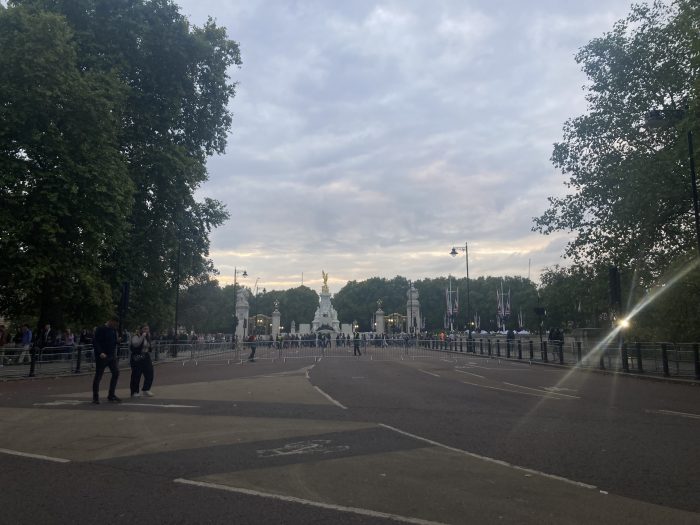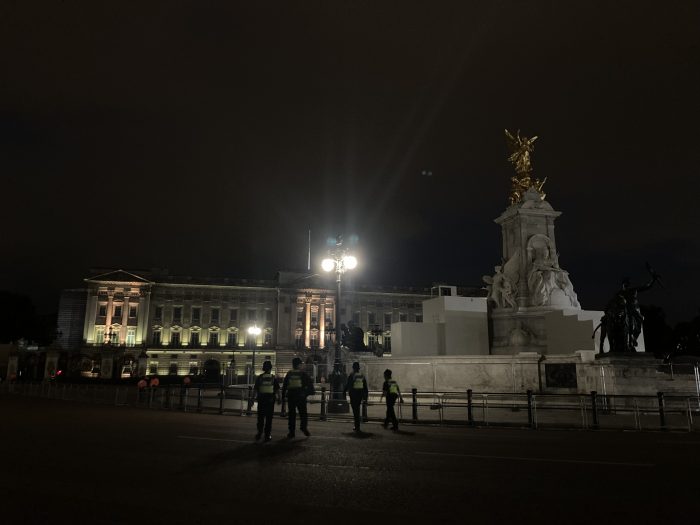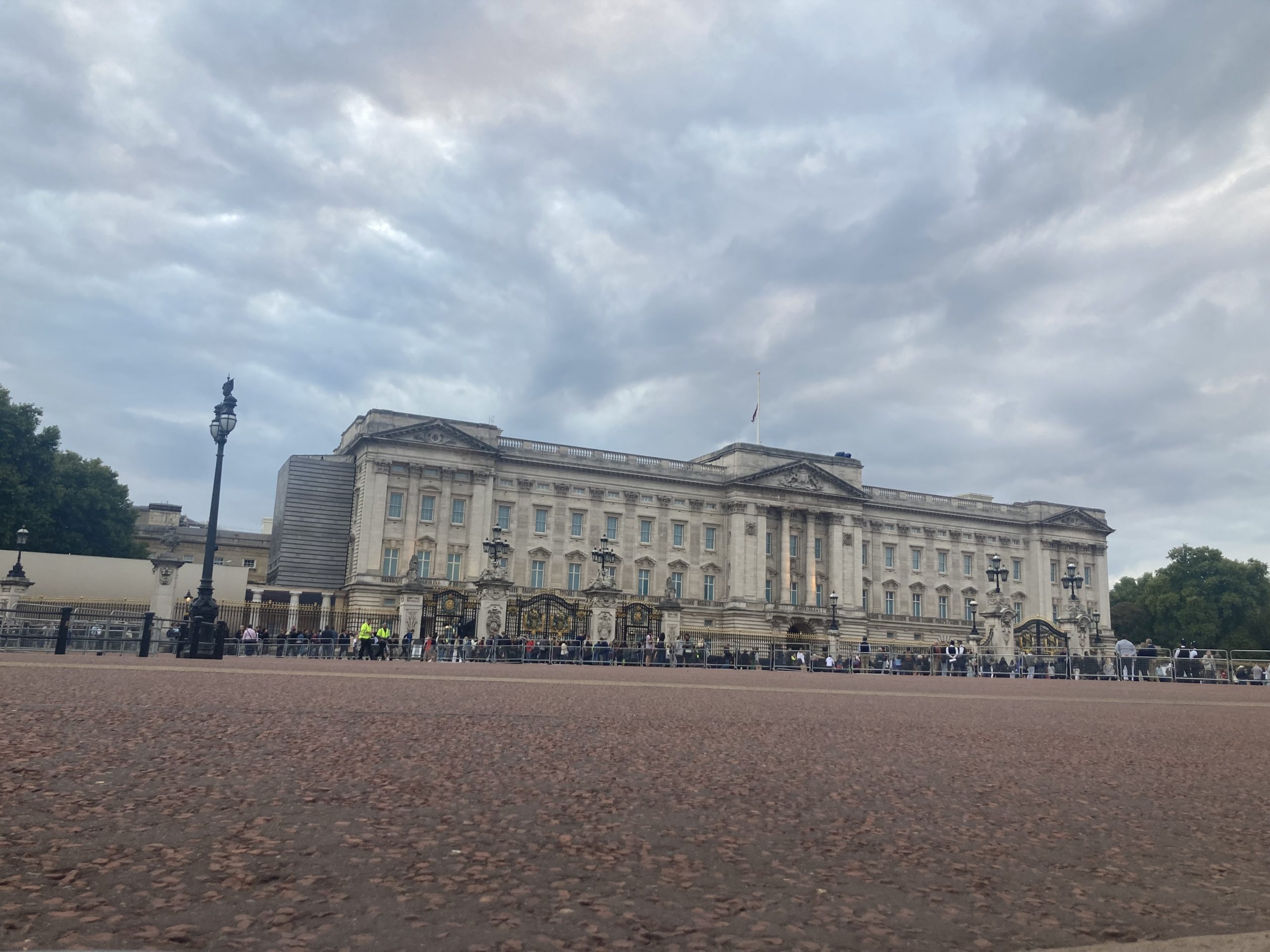Wandering London in the days leading up to the funeral of Queen Elizabeth II there seemed to be one word whispering across everyone’s lips. “Unreal”.
For many across the United Kingdom and the world it was “unreal” to see the death of a monarch. “Unreal” to imagine the sudden disappearance of someone so long reigning, the only Queen much of the population ever knew.
And as the capital city chugged to a halt, for many more Londoners it was “unreal” to witness empty streets in Westminster or a stilled and silent Trafalgar square. A city shut down in honour of its Queen.
In the days leading up to her final journey, a bewildering absence of noise hung over central London as the city prepared for the state funeral of a monarch.
Traffic ceases, police observe, mourners queue.
People milled around Westminster, taking in the restless atmosphere. Most wore dark colours, either a subconscious or openly mournful choice. Every so often a uniform glides past having just paid their respects or on their way to a procession rehearsal.
Chatter is minimal. Some take group selfies with the police scattered across the emptied Parliament Square. Some just walk solemnly, funnelled towards Buckingham Palace, Green Park or the infamous 20 hour long queue. A smattering of media presented the only real noise, as their observations are broadcast across the country and world.
And still four days out from the biggest London based event the world has seen, the security is immense. A metaphorical ghost town constructed from organised anti-terrorism measures. Traffic lights flicker aimlessly, as their typical cohort of cars is blocked from the area surrounding Westminster Hall’s lying-in-state. Barricades line the streets, lying in wait for their influx of crowds. Mourning citizens walk very particular routes to avoid walls of targetable humans along the Mall.

And just when you think London can’t get any more secure it does. Monday the 19th. The big day.
A pink sun rises over the River Thames, aiding those hundreds of thousands of travellers who descend upon the capital for one very purposeful reason – to witness the death of a monarch. And yet there was calm. Peace. Solemnity. A city of mourners taking their national motto to heart. Keeping calm and carrying on.
As the streets fill with mourners, media and world leaders, a circle of steel erects itself around central London. Landmarks huddle safely behind this ring, the bustling streets vacant as procession viewers are funnelled one way from Westminster Station to Horse Guards Parade or further… no one may get too close to the all important Westminster Abbey.
Rooftops present glimpses of security with binoculars, while the real weapons are hidden masterfully from view. Only a few hundred people are allowed in each viewing area, both for security and comfort reasons. The people wait anxiously, some wanting to pay their respects, others amazed by the pomp and pageantry of the first state funeral in almost 60 years.
And despite the worldwide witnessed procession, the actual city lacked fanfare. London seemed more eager to farewell its Queen than show off itself. Gone were the wacky Union Jack hats and celebratory cheers of the Platinum Jubilee… this was a day of global, national and personal farewell.
When the clocks strike 11 the city falls silent. Choristers’ voices echoed out of the radioed speakers decorating Whitehall, and the funeral’s audio floated over London. Crowds were shushed into solemnity. Eventually the lone beat of a single drum faded in, blending eerily with the mournful hymns, as the military arrived to take their procession places.
40 minutes later that procession began. Slow, steady, spellbinding. Soldiers solemnly stride in an timeless acknowledgement of tradition and a present acknowledgement of death. Mournful music aids the tone and march. The coffin floats by in seemingly infinite magnitude, the gathered crowds shocked into stillness, bows, or a frantic grasp for phones and cameras.
As one procession fades from sight, another more energetic one takes shape. Once the long guarded gates reopen, the one way people’s procession out of central London begins again.
The people have grieved, and now it’s back to reality, back to ordinary life.
Of course, just an hour’s drive away similar hoards wait patiently along Windsor’s Long Mall for their moment in the sun… but for London’s population there are flowers to lay, trains to catch, TVs to race back to.

The city itself will remain in unnavigable lockdown for a few more days to come, with crews arriving later that night to begin returning street signs and traffic lights to their rightful homes… not to be completed until Wednesday at the latest.
Green Park’s own impromptu makeover is even now yet to be undone, as thousands continued to make the post-funeral journey to contribute Queen-covered tributes to her new knee high garden beds.
Death and the Queen are two things that must be seen to be believed. London, however forcefully, played its role in ensuring this specific death was seen, and believed, by everyone who chose to watch it.
It secured its visitors, silenced its hustle and bustle, tore itself down for a few days of farewell. It is no easy task to silence a city of eight million, and yet somehow the death of a monarch achieved the unthinkable.
To quieten London is to hush chaos itself. Unimaginable, unbelievable, “Unreal”.
